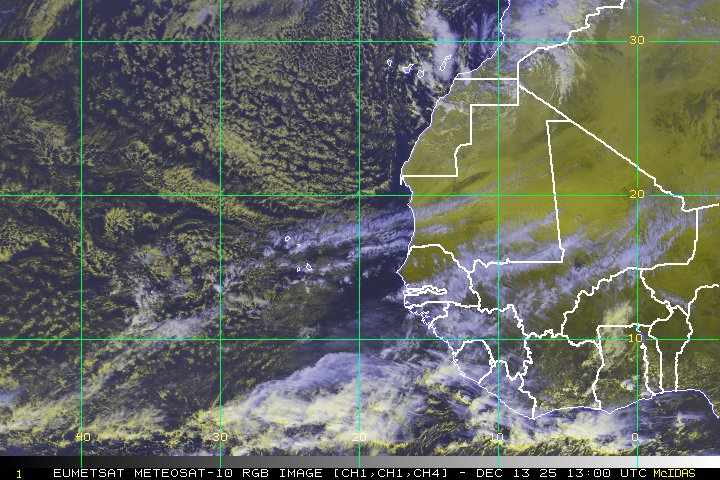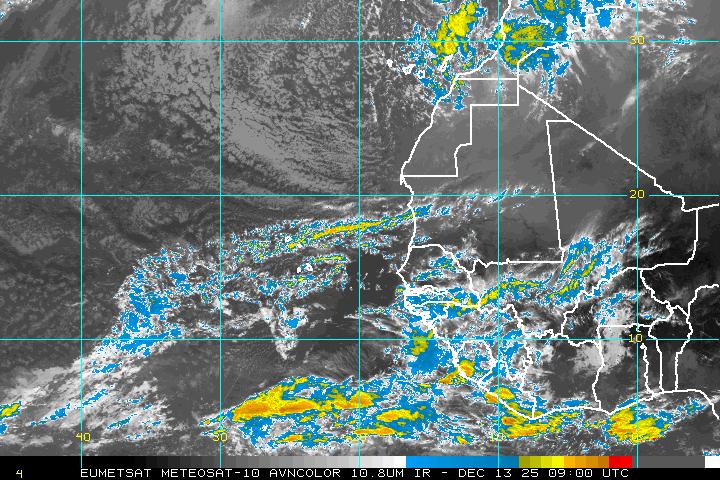Hi again and thanks for stopping by to read another tropical weather outlook. August is wasting no time becoming very active, with three areas worth watching, two of those now designated as tropical cyclones. Ernesto is still the main story, as it continues to turn across the Caribbean and appears to be getting better organized. TD #6 is new to the world, but is way out in the East Atlantic, just off the African Coastline. Finally, we have an invest much closer to the United States. I’ll talk about each feature in Today’s outlook!
Tropical Storm Ernesto
After a difficult day fighting westerly vertical wind shear and dry air intrusions, Ernesto has re-organized somewhat overnight. Ernesto looked like skeleton last night with limited deep convection and only minor rain bands surround the circulation on radar. However this past evening, deep convection is much more organized surrounding the center in all quadrants alongside improved banding features which are indicating a better organized system. A deep burst of convection earlier has resulted in an expansion of outflow to the western side of the circulation, the first time this has happened by any significant margin. Water vapor shows this nicely, with upper level easterlies pushing the outflow ahead of the system. Vertical wind shear as a result has decreased to 5-10 knots as an upper level anticyclone builds over the system. This low vertical wind shear, alongside both warm sea surface temperatures (SSTs) and very high oceanic heat content (OHC) spells a recipe for further intensification. One slight limiting factor might be lower precipitable water in the storm’s path. However, in a low shear regime this lower atmospheric water vapor won’t be as much of a limiting factor. In fact, its primary impact might be to limit the size of Ernesto as it moves westward across the Caribbean. So now that I’ve gotten the past and present out of the way, where is Ernesto going, and will this pose a threat to land as a significant Tropical Cyclone down the road?

ECMWF in 3 hour intervals. Plotted are 925 hPa heights (black contours), 500 hPa vorticity (shaded), and 500 hPa heights (white contours).
To illustrate this threat, lets first talk about track of Ernesto. Normally I would show a 500 hPa plot of both the ECMWF and contrast it with the GFS. However, both global models are having a hard time accurately depicting the circulation, especially after the recent organization that has taken place overnight. Instead I want to illustrate why I think the ECMWF (and to a lesser extent the GFS) might not have the correct solution. Pictured above is the 925 hPa heights from the ECMWF from 00z Last Night to 12z on August 5th. Overlaid is the 500 hPa vorticity and heights. Notice how the low-level circulation quickly runs out away from the mid-level circulation. This typically occurs when there is significant vertical wind shear. I am having a hard time believing that the low-level flow is going to rapidly increase to the point that it causes the low-level and mid-level centers of Ernesto to decouple. This problem with this forecast is that the vertical wind shear over Ernesto is decreasing currently. As long as the low and mid-level centers do not separate, we should see a more vertically coherent system which should be able to feel the weakness in the Mid-latitude trough that will develop over the Gulf of Mexico in the longer range.
The track guidance splits in the long range mainly due to differences in intensity. I ultimately believe the most rightward tracks will prevail, especially if Ernesto intensifies more than expected. Intensity wise, things will probably still be slow going for the next 24-48 hours as the storm develops an inner core and negates some of the dry mid-level air nearby. However, once the storm is in the Western Caribbean all things are a go for robust development, and rapid intensification won’t be out of the question. The intensity guidance is very bullish, especially the statistical models. At this point, I’ll stay on the low side for the firt 24-48 hours, but beyond Ernesto could rapidly intensify and that will be reflected in the forecast.
Here is my first forecast for Ernesto. You can see that in the short term I have Ernesto only slowly intensifying until it reaches the Western Caribbean. From here rapid intensification takes place between 72-96 hours, although the time period where this takes place will be exceptionally difficult to forecast. From there it is likely that Ernesto will clip the Yucatan Peninsula which will limit its maximum intensity. Still though, I think this is a very bullish forecast in the long term. Stay tuned for updates in the days to come!
Tropical Depression #6
Tropical Depression #6 formed last night way out in the East Atlantic close to the Cape Verde islands. While the system was originally being sheared from the northeast, a recent microwave pass shows substancial organization since then, with even hints of an eyewall trying to develop. Needless to stay this system is likely intensifying as we speak and we will likely be looking at Tropical Storm Florence later today. The future for this system outside of the short term though, looks rather bleak, with cooling SSTs and a dry stable Saharan Air Layer that might put a damper on convection beyond 48 hours. Consequently, both the GFS and ECMWF dissipate the system beyond 72 hours. I’ll keep you updated on this system as well in the days to come.
Invest 91L
Finally on our list we have Invest 91L. This system developed yesterday afternoon from an old tropical wave that is now interacting with an upper level low. More recently, the upper level low has been moving away which has lead to slightly more favorable conditions. However, the system will have to get more organized soon before it moves inland over Florida. Thus far, radar animations show that the convection with the system is still meager, and it will take a substancial uptick in convection for this system to organize further. At this time I’m giving 91L a 30% chance of development, which is slightly higher than the National Hurricane Center (NHC) currently.
And that’s all I have (phew) for todays tropical weather outlook. Look for another update tomorrow!

































